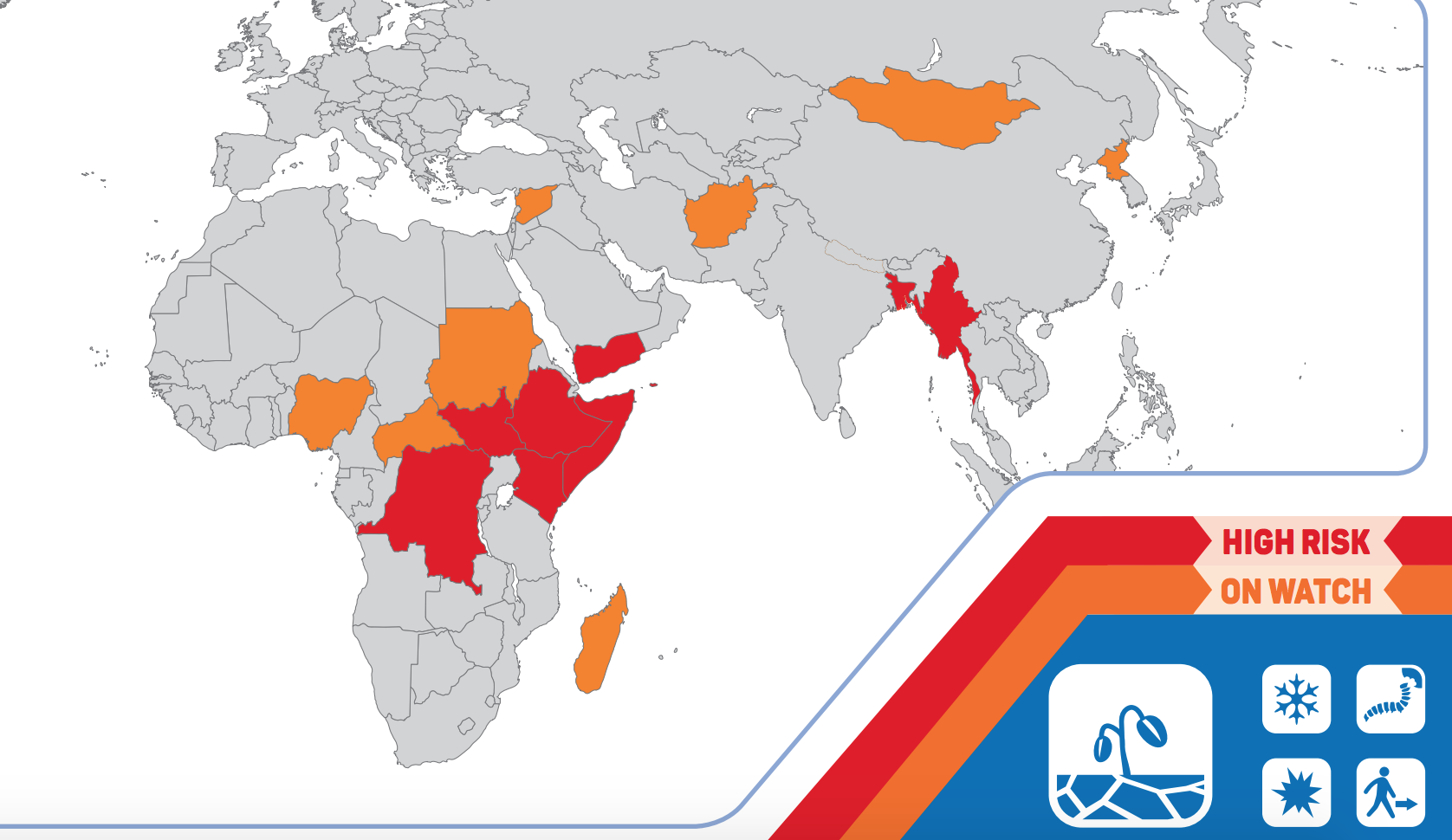Today’s map comes from the UN’s Food and Agriculture Organization. It is part of the FAO’s early warning system that seeks to forecast where food insecurity will be most acute in the coming months. This map forecasts expected emergencies in the first quarter of 2018, and as you can see many of the usual suspects are on the list.
In all, eight countries are considered “high risk” meaning that the international community needs to take immediate steps to curtail the worst effects of food insecurity, including potential famine. Seven more countries are considered “on watch” meaning they could soon move into that high risk category. One such country is North Korea. And here, the report has interesting things to say about the effects of ever-tightening sanctions against North Korea–in particularly the steep sanctions placed on oil imports.
The report warns that food insecurity is expected to get worse in North Korea precisely because of fuel shortages. “Food insecurity are expected to further exacerbate in early 2018 due to the limited availability of petroleum, the report says. “The rationing and limited stockpiling of fuel will be a significant concern for cooperative farmers, who rely on its energy to operate farming equipment for field preparation activities. This, in turn, will likely hinder the 2018 crop harvest prospects.”
The report makes certain recommendations in light of these sanctions, including the provision of small farming equipment and livestock to farmers to help them cope. But it is also the case that the international humanitarian community already has an exceedingly difficult time providing aid in North Korea. As it stands, it looks like an already dire food security crisis in North Korea is poised to get worse.
Read the full report
